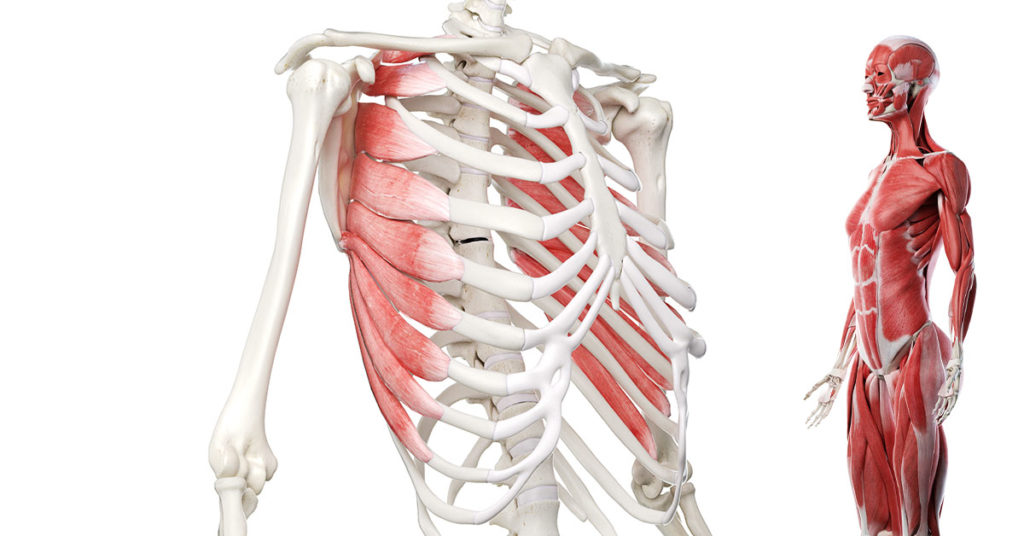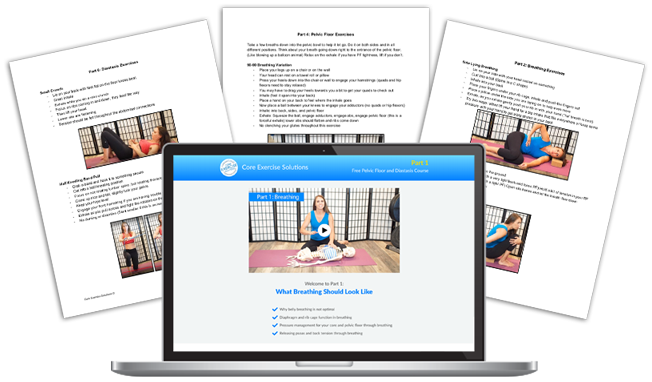You may have heard of the serratus anterior muscle and scapular winging, but did you know that how your serratus functions can have effects well beyond your shoulders? This vital connection helps with neck and shoulder pain, affects core strength, connects your trunk to your pelvis for better hip function, and helps your obliques fire to decrease quadratus lumborum pain. Let’s explore your new secret weapon, the serratus anterior!
Although the serratus anterior has been gaining in popularity as a muscle of interest, many have not yet heard of it and don’t know how to strengthen it. Why is that? People really like to strengthen what they can see, and it’s a muscle that’s not easily seen. It can also be challenging to isolate and feel it working.
The Importance of the Serratus Anterior
A well-functioning and strong serratus can help to alleviate neck and shoulder pain and reduce forward head posture and rounded shoulders. It can also help with performance and tolerance for push-ups and planks. The serratus can improve core function through its connections with the external obliques for better hip function and reduced back pain. It can even increase lymphatic drainage and decrease neural compression. Let’s break it all down, and make sure you keep reading to learn how to strengthen your serratus anterior for all of these amazing benefits!
Serratus Connection to the Shoulders and Neck
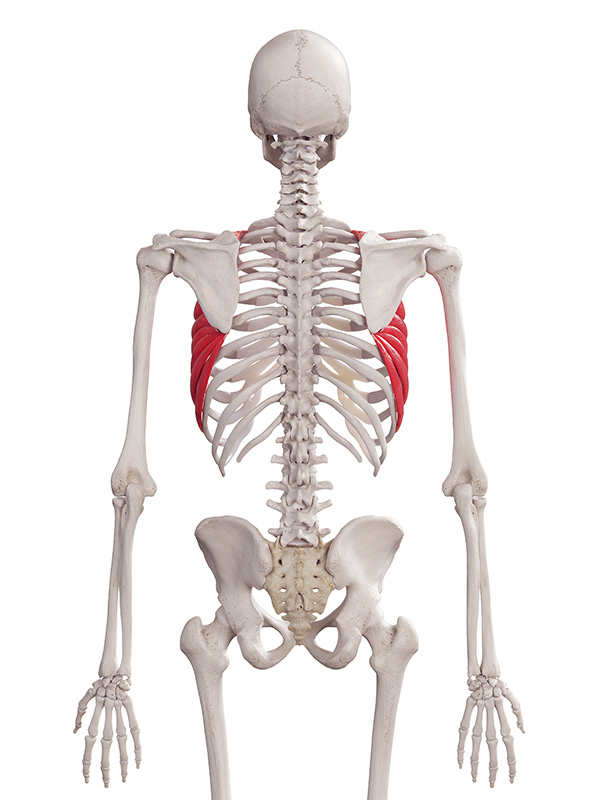
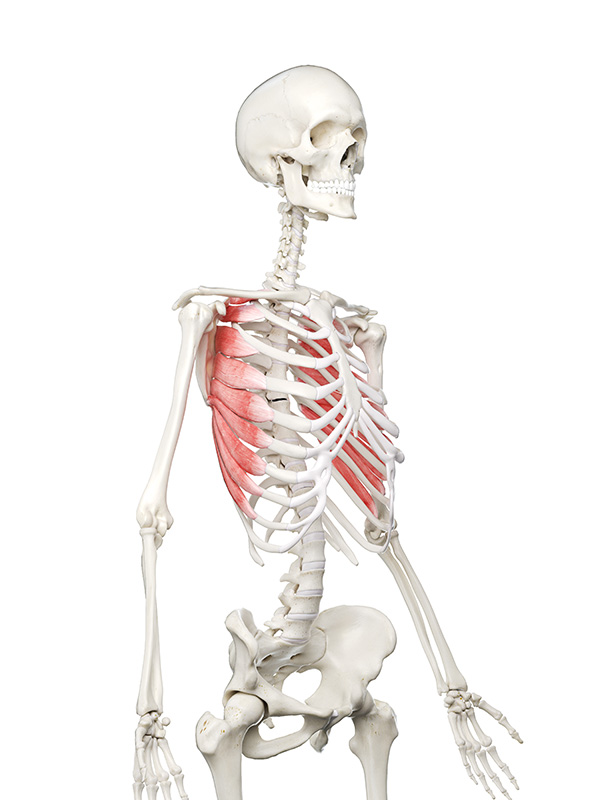
Serratus Anterior Anatomy
Where is the serratus, you ask? The serratus is a fan-shaped muscle that lies on the outside of the rib cage. Its origin and insertion are the first through ninth ribs and the front side of the scapula. The serratus anterior is innervated by the long thoracic nerve. A traction injury to this nerve can weaken the serratus, contributing to scapular winging and limited upward rotation.
Serratus Anterior Action
Since the shoulder joint includes a shallow socket with a large ball that requires a lot of dynamic control and stability, many parts need to work together for optimal shoulder function and neck support. (Panagiotopoulos et al., 2019) The serratus is a big player in helping with proper scapular mechanics and stability for the humerus to move well.
Concentrically, the top fibers help with protraction, while the bottom fibers of the serratus anterior help with scapular upward rotation which allows for full shoulder flexion. Without this upward rotation, the humeral head would bump into the roof of the socket when you tried to raise your arm overhead. (Keshavarz et al., 2017) Eccentrically, it helps to support scapular retraction and lowering your arm down.
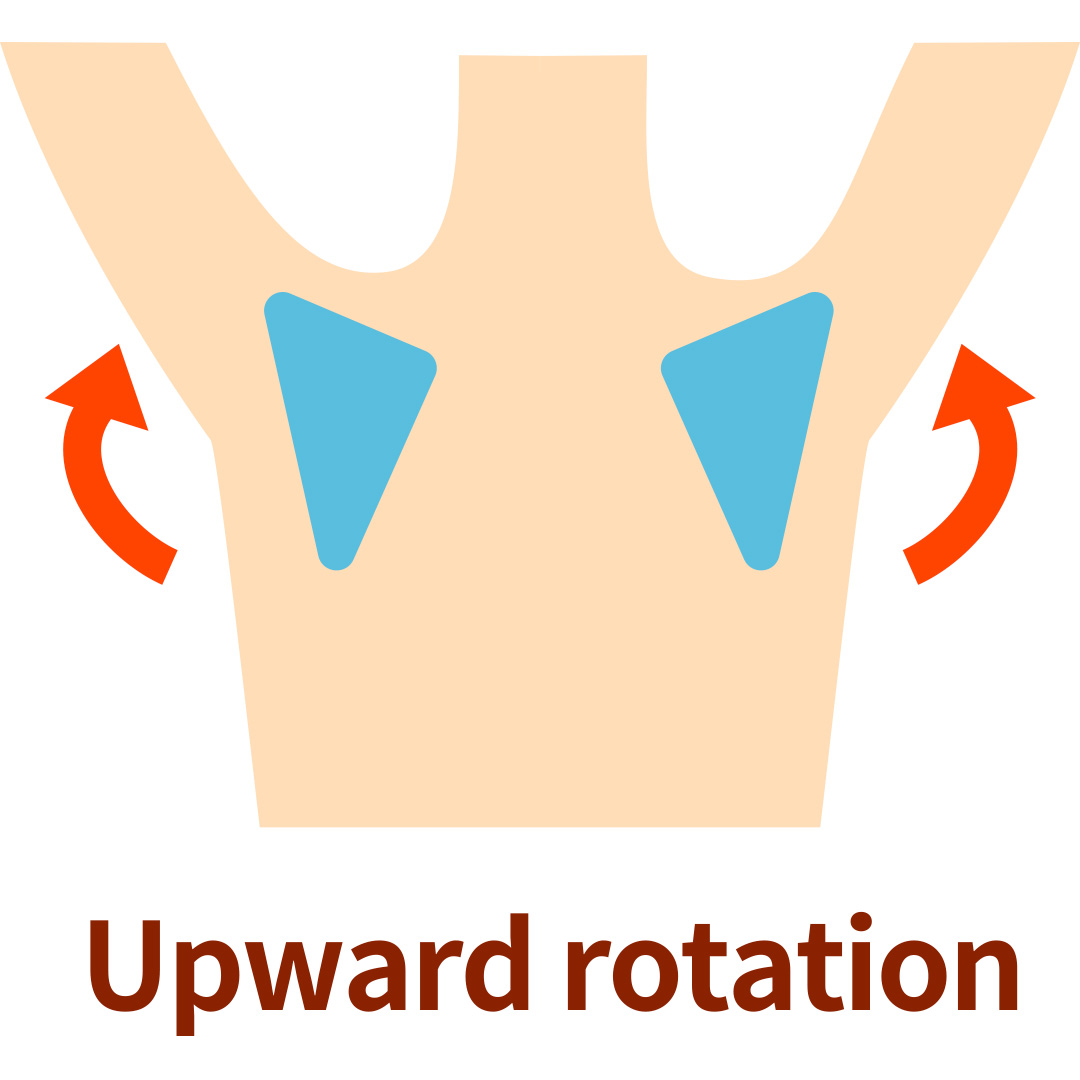
The serratus helps to hug the scapula onto the rib cage. A lack of this hugging is identified as scapular winging, and this can be a big factor in poor scapula and neck mechanics and support. (Gooding et al., 2014) Serratus anterior weakness isn’t the only player in scapular winging. Tightness in the rotator cuff muscles, pecs, and serratus can pull the scapula to the side and tip it up and over the rib cage. Rib cage mobility can also play a role. Addressing all these areas can help to set up the serratus for more success.
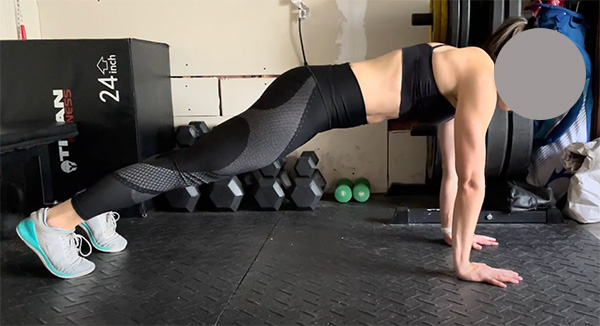
Compensations for a Weak Serratus Anterior
If the serratus is weak and doesn't function well, the pec minor, upper traps, or lats can take over and contribute to impingement. Both the serratus anterior and pec minor perform protraction. If the serratus is weak, the pec minor will overwork. The lats will also kick in to help a weak serratus provide stability to the scapula through stiffness instead of dynamic control. The pec minor and lats pull the scapula down, bringing the roof of the scapula down onto the humeral head and pulling on the neck muscles that attach to its top aspect. The downward position can inhibit the inferior fibers of the serratus anterior from working. Further neck overactivity can occur due to compensating for limited upward rotation when raising the arm by elevating the scapula instead (using the levator scapulae and upper traps). Another compensation for limited upward rotation can be rib flare, which will lengthen the abs. This can put a strain on a healing diastasis and overly use the paraspinal muscles for overhead reaching.
Yet another layer is that the pec minor can become a bully if the pec major is not showing up enough. Ensuring the pec major is engaging during chest work and working good eccentric control of the movement can help to make your serratus work more successful.
Just like stiffness in the lats can limit upward rotation, stiffness in the scapular retractor muscles can affect protraction. Working the eccentric portion of middle and lower trap exercises (like reverse flies or rows) while thinking of broadening between the upper tips of the shoulder blades without dropping your chest can help with decreasing this stiffness.
If you have an elevated scapula, improving lower trap strength for scapular depression and retraction can set up the serratus to do the work instead of being dominated by the upper traps and pec minor. It can also help to decrease tension in the neck and create positive postural changes. (Park et al, 2020)
If you already have rounded shoulders, it’s important to work on the eccentric portion of the serratus first to release tightness. It’s hard to protract a scapula that is already protracted, and your attempts will often lead to increased neck tension. To help inhibit overusing the lats here, cues such as keeping space between your armpits and hip bones, imagining a balloon under your arms that is slowly deflating, “fluffy” armpits, and making sure you are controlling the arm lowering instead of pulling it down (unless you are trying to load the lats) can be helpful.
When working to improve the function and support of the scapula and neck, sometimes you need to have more of a team approach by including other scapular strengthening. (
The Serratus and Other Systems
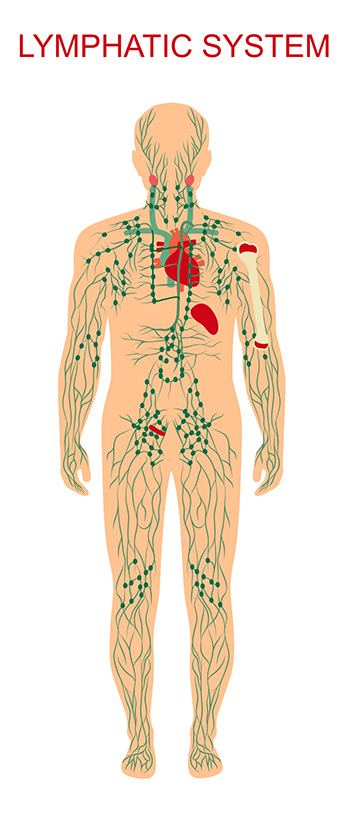
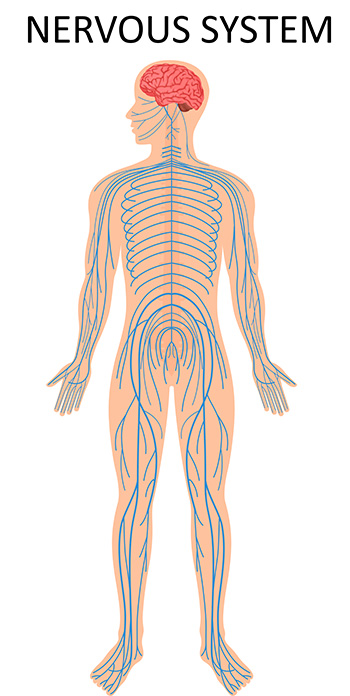
Improved shoulder positioning and function can benefit other systems as well, such as enhancing lymphatic drainage and nerve flow. Your lymphatic system helps to transport toxins and swelling, and some channels of your lymph system lie underneath your neck and across your chest. Think of poor alignment and scapular mechanics as causing a kink in a hose, limiting the flow. Good serratus strength helps with the alignment of the scapula, neck, and attaching musculature, thus unkinking the hose.
This alignment can also help with decompressing the nerves that run through that area. (Sanders et al., 2017) Compressed nerves can be a potential contributing factor to numbness and tingling in your hands, or a diagnosis such as thoracic outlet syndrome.
Serratus Anterior and External Oblique Connection
Let’s move on down the body and talk about how your serratus connects to your core. Having strong and dynamic abs involves how well your external obliques fire. The serratus anterior has fibers that intertwine with the external obliques, so a well-functioning serratus means more power to the external obliques. You can use an active reach with your serratus to engage your external obliques and help give them more oomph.
External obliques half kneeling rotation
Serratus crunch
You can even use this connection to help improve glute function
Serratus Connection to the Rib Cage and Breathing
Another way to help with a better connection to your core is through great breathing mechanics. Reaching with your serratus while you inhale can help widen a narrow rib cage. This can be especially helpful if you have a lower diastasis recti or pelvic floor dysfunction. On the flip side, you can reach as you exhale to use the serratus to help close your rib cage in the front. This can be a particularly important factor when you’re trying to heal an upper or middle diastasis recti.
Actively reaching to bring the scapula around and forward to close the front of the ribs will reciprocally open more of the back of the rib cage and the muscles between your shoulder blades. If you hold this position during an inhale, you can direct more expansion into that back part to decrease back stiffness.
Along the same lines, being able to achieve scapular upward rotation and disassociate the scapular movement from the rib cage also improves core control. It helps you to reach overhead or push forward instead of getting the movement from either arching in your back and flaring your ribs, or dropping your chest and rounding your shoulders. This will contribute to improved core strength, posture, and breathing mechanics that can help with diastasis healing and reducing back pain and stiffness.
So, depending on what part of your rib cage needs expanding or closing, you can use scapular positioning and the serratus with intentional breathing to help. Talk about a full-circle powerhouse of muscle!!
How to Train the Serratus Anterior
How do we work our serratus anterior? It’s not always easy because those cheater muscles like to get involved, or a precursor step may need to be taken. This means you might need to do some inhibition or release work first. Another contributing factor could be needing to improve your rib cage positioning and mobility. Think of the rib cage as a water bottle that is convex. The scapula is concave, and it slides around the convex rib cage. Compensations, habits, and imbalances can put “dents” in our water bottle or compress us from front to back or side to side and change its shape. This affects the tracks that the scapula can move along.
As you progress into the exercises, be sure to pay attention to not just what you’re doing, but how you are doing it. When an exercise is too challenging for a muscle, your body will compensate elsewhere and reiterate old habits that you’re trying to rewire.
Before we get into strengthening the serratus, you’re going to work on some mobility drills to help round out the rib cage and improve the surface for the serratus to work on. This alone can improve its function. Rather than trying to pull the scapula onto the rib cage, you’ll be pushing the rib cage onto the scapula. (Instead of positioning the scapula back by working scapular muscles, you can push it back by expanding the chest wall.)
*If you have osteoporosis or osteopenia, please consult with a healthcare professional before doing rib cage mobility exercises.
Child’s Pose Breathing With Overhead Reach
This exercise helps to unstick the scapula from the rib cage and improve the foundation for the scapula to move on. This can also be a great position to decrease tension in the lats to improve serratus function. If the lats are overactive, this can contribute to scapular depression and limit upward rotation
Troubleshooting tips
- You might benefit from elevating your bottom on a rolled-up towel or pillow, particularly if you have tightness in the back of your hips or pelvic floor. This will help avoid overly rounding through one part of your spine or losing the connection of your sit bones to your heels as you fold forward.
- You can explore keeping your elbows in at your knees if you need more chest wall expansion.
- You might notice that one side (often the right) feels a bit more restricted than the other. You can keep the nonrestricted side tucked in at your knee and slide the more restricted side forward. As you slide your arm forward, think of turning your rib cage toward the bent elbow side. The next exercise can help address this further.
Rib Cage Smash
While child’s pose breathing primarily works on posterior expansion with a bit of lateral rib cage mobility, this exercise works on lateral rib cage mobility with more potential for anterior chest wall expansion and a bit of posterior expansion.
Troubleshooting tips
- Explore rotating a bit more forward over your bottom ribs and inhale down into the bottom rib cage. This can help with the mobility of the upper and lower ribs on that side and release the pecs, lats, and QLs. You can also explore reaching the top arm lower toward your knee, holding that position as you inhale into your bottom ribs.
- If you’re feeling tension in your neck, go ahead and put a pillow under your head. Make sure you’re inhaling down and not up into your neck. Also make sure when you’re reaching your arm forward that you’re not straining your neck.
- If your top arm gets tired, you can rest it on the ground.
Further release work of trigger points in the pecs, serratus, between your shoulder blades and lats is sometimes needed, so keep that in mind if you find yourself struggling as you move further into strengthening.
Exercises to Strengthen Your Serratus
Serratus Press and Release
This is a great starter exercise for dynamic release work to address serratus tightness by getting the serratus to work both concentrically and eccentrically. The eccentric control part is particularly important if you already have rounded shoulders or protracted scapulas. It’s like a drawer that is stuck, so it might need to go backward first before you can pull it out.
This unsticking of the scapula from the rib cage will help set the stage for other shoulder strengthening exercises. Performing it on your forearms can help remove compensations that can occur in the elbow and humerus.
Check out the second exercise to see the inverted serratus press and release. I wanted to include the whole video in case you’d like other exercise ideas!
If you’re struggling on your forearms, you can try a lighter version on a countertop instead.
Troubleshooting tips
- If you feel discomfort in your neck or shoulders:
- Make sure your upper arms stay vertical throughout the movement
- Make sure you don’t shift forward or backward throughout the movement
- Make sure you don’t pull yourself down into the position (this will use the lats and middle traps instead of eccentric control of the serratus)
- Explore a hands and knees position with these feedback tips to help make sure you’re isolating the movement to the serratus
- If the movement doesn’t feel fluid:
- As you lower down, you might have to think more of the lower or upper tips of the scapula coming toward each other to create an equal movement
- As you press back out, you might have to think of the upper tips of the scapula sliding away
- You can also experiment with palms down versus palms up, depending on your scapular positioning and any soft tissue restrictions in your shoulders and chest
- Try elevating one forearm (most commonly the left) while keeping equal weight over both arms, and see if that helps
- Try pulling your forearms away from each other without them actually moving (this can provide more support to the serratus from the back side scapular muscles and help keep the chest wall open for those who already have more rounded shoulders)
- On a similar note, you might need some eccentric chest work, making sure you find your pec major over your pec minor
Feeling easy? Increase the challenge to your serratus and core by trying this in a kneeling plank position using your hamstrings, or in a full plank.
Just make sure that as you increase the challenge, you don’t short-change yourself on the range of motion, what you feel working, or lose good form in your shoulders or core.
Serratus Foam Roller Up the Wall
This exercise is great for working the upward rotation action of the serratus, opening the back of your rib cage, actively bringing length to lats, and bringing in some lower level core work. Adding a band around your elbows to press out against can help inhibit your pecs to isolate your serratus, so don’t skip that step!
Troubleshooting tips
- If you feel it in your neck:
- Make sure to go slowly, and pause at the moment you feel your neck kick in or your shoulders rise up
- Wiggle your neck, then feel it relax (without pulling your shoulders down), then try to sneak up a bit higher
- If you’re struggling with range, pause and inhale into your armpits, back, and between your shoulder blades to help improve the foundation from which your scapula will move and unstick any stuck tissue and then reach up a bit more, working to keep expansion in the areas you just opened
- You can try doing one arm at a time, though you won’t be able to use the band to help inhibit your pecs if they are likely to kick in
This is a highly effective exercise if you do it right! The important thing is to go slowly and feel the scapula moving on the rib cage while keeping your neck relaxed and rib cage in place. When this feels easy, you can add weight in your hands to make it harder. Then, once you get this perfected, grab a dumbbell to translate the movement into an overhead press or arm raise. With both of those, make sure to focus on the slow eccentric control as you lower down.
*As an aside, this action and movement is the same action as a serratus wheel or ab wheel. The wheel is just much harder. The other main difference is you’ll have to pull back as well and have strong lats to help with the ab wheel.
Supine Serratus Press
This exercise is great for continuing to strengthen the serratus in isolation and working one arm at a time. (Intelangelo et al, 2022) Remember, if it’s not pulling its own weight, muscles like the pec minor and upper traps will dominate and can contribute to shoulder and neck discomfort. This exercise can really expose how weak the serratus actually is, and you might have to use NO weight at all. The first level of working to find your serratus without pecs or upper traps can take some time, but once you get it, you’ll be able to progress relatively quickly with added weight. That being said, because it’s a small muscle, the weight progression should be only by half or one-pound increments, not five. In the end, the goal with this exercise is to build up to 15-20 pounds!
Troubleshooting tips
- Note that research showed increased EMG activity for a serratus press with the shoulder at 110-120 degrees of flexion. (Kang et al 2019) That being said, you can play with the angle of your arm (either more up or more down, and to the midline or out) to find the sweet spot.
- If you find when you lie on your back that your head arches back, try placing a small pillow under your head to alleviate neck tension and activation.
- Squeezing a yoga block between your knees can help improve the support and stability to your core so the scapula can work independently.
- If you feel your arm doing a lot of work, explore decreasing the tension of the band and moving it higher or lower on your arm. Visualize the pulling out against the band happening from your scapula, and not just your arm.
- Watch that you’re not pulling your armpit down to your side as you do the movement. This will engage the lats and lock the scapula down, often creating neck tension and shoulder discomfort.
You can even work on this exercise in side-lying, as demonstrated in the series here.
When you are ready, you can take this type of serratus engagement to the next level and tie it into other upper body movements by making sure that you fully push through at the top of your push-ups, adding a push-up plus at the top, and lifting out of the bottom shoulder blade in your front and side planks.
Planks on a Ball
This last exercise is extremely challenging for both the core and serratus, so it might take some time in both areas to build up to it. This video shows various progressions for the exercise. Just holding the plank on the unstable surface is an added challenge to your core and serratus.
Troubleshooting tips
- Wider feet can give you a bit more of a base of support to help stabilize you
- Alternatively, you can squeeze a block or foam roller between your knees, or use your hamstrings to provide more pelvic stability
- You can try it from your knees with or without engaging your hamstrings to make it easier (you just might need a smaller ball)
- You might need some extra troubleshooting for your plank or to increase your anterior core strength in all planes of motion to improve it
Whether you’re looking to eliminate pain in your neck, chest, shoulders, or back; looking to heal a diastasis or address pelvic floor dysfunction; feel like you’re struggling to make progress in your core or hip strength; or simply want to strengthen your planks or push-ups—it will be worthwhile to explore adding in some serratus workouts to your exercise routine. It really is a powerhouse muscle that packs a lot of bang for your buck! At first, it might take some time to wake it up and get it back on board, but your efforts will pay great dividends in the end.
**** If you have a hernia, diastasis, or pelvic floor issues, further assessment needs to be done first to see if this is an appropriate exercise for you.
How to progress a plank with a diastasis
For more about healing a diastasis, hernia, or the pelvic floor, check out these articles, book a consult, or reach out to a PCES grad near you.
- How to help your body heal a hernia naturally without surgery
- Diastasis recti definition, causes, and treatment
- Safe exercises with prolapse and ones to avoid
Are you a professional wanting to learn more about the serratus and its effect on diastasis recti and the pelvic floor? Check out our PCES 3.0 course or Learning Through Applications Membership.
Research:
- Panagiotopoulos AC, Crowther IM. Scapular Dyskinesia, the forgotten culprit of shoulder pain and how to rehabilitate. SICOT J. 2019;5:29. doi: 10.1051/sicotj/2019029. Epub 2019 Aug 20. PMID: 31430250; PMCID: PMC6701878.
- Keshavarz, R., Bashardoust Tajali, S., Mir, S. M., & Ashrafi, H. (2017). The role of scapular kinematics in patients with different shoulder musculoskeletal disorders: A systematic review approach. Journal of Bodywork and Movement Therapies, 21(2), 386-400.
- Gooding BW, Geoghegan JM, Wallace WA, Manning PA. Scapular Winging. Shoulder Elbow. 2014 Jan;6(1):4-11. doi: 10.1111/sae.12033. Epub 2013 Jul 15. PMID: 27582902; PMCID: PMC4986647.
- Park SH, Lee MM. Effects of Lower Trapezius Strengthening Exercises on Pain, Dysfunction, Posture Alignment, Muscle Thickness and Contraction Rate in Patients with Neck Pain; Randomized Controlled Trial. Med Sci Monit. 2020 Mar 23;26:e920208. doi: 10.12659/MSM.920208. PMID: 32202262; PMCID: PMC7115121.
Neumann DA, Camargo PR. Kinesiologic considerations for targeting activation of scapulothoracic muscles - part 1: serratus anterior. Braz J Phys Ther. 2019 Nov-Dec;23(6):459-466. doi: 10.1016/j.bjpt.2019.01.008. Epub 2019 Feb 2. PMID: 30737019; PMCID: PMC6849091. - Sanders RJ, Annest SJ. Pectoralis Minor Syndrome: Subclavicular Brachial Plexus Compression. Diagnostics (Basel). 2017 Jul 28;7(3):46. doi: 10.3390/diagnostics7030046. PMID: 28788065; PMCID: PMC5617946.
- Intelangelo, L., Ignacio, L., Mendoza, C., Bordachar, D., Jerez-Mayorga, D., & Barbosa, A. C. (2022). Supine scapular punch: An exercise for early phases of shoulder rehabilitation? Clinical Biomechanics, 92, 105583.
- Kang FJ, Ou HL, Lin KY, Lin JJ. Serratus Anterior and Upper Trapezius Electromyographic Analysis of the Push-Up Plus Exercise: A Systematic Review and Meta-Analysis. J Athl Train. 2019 Nov;54(11):1156-1164. doi: 10.4085/1062-6050-237-18. Epub 2019 Oct 4. PMID: 31584855; PMCID: PMC6863690.
Working with pregnant and postpartum clients/patients?
This 6-part course offers key takeaways on breathing, pelvic floor strengthening and diastasis recovery. Sign up and start learning today!

